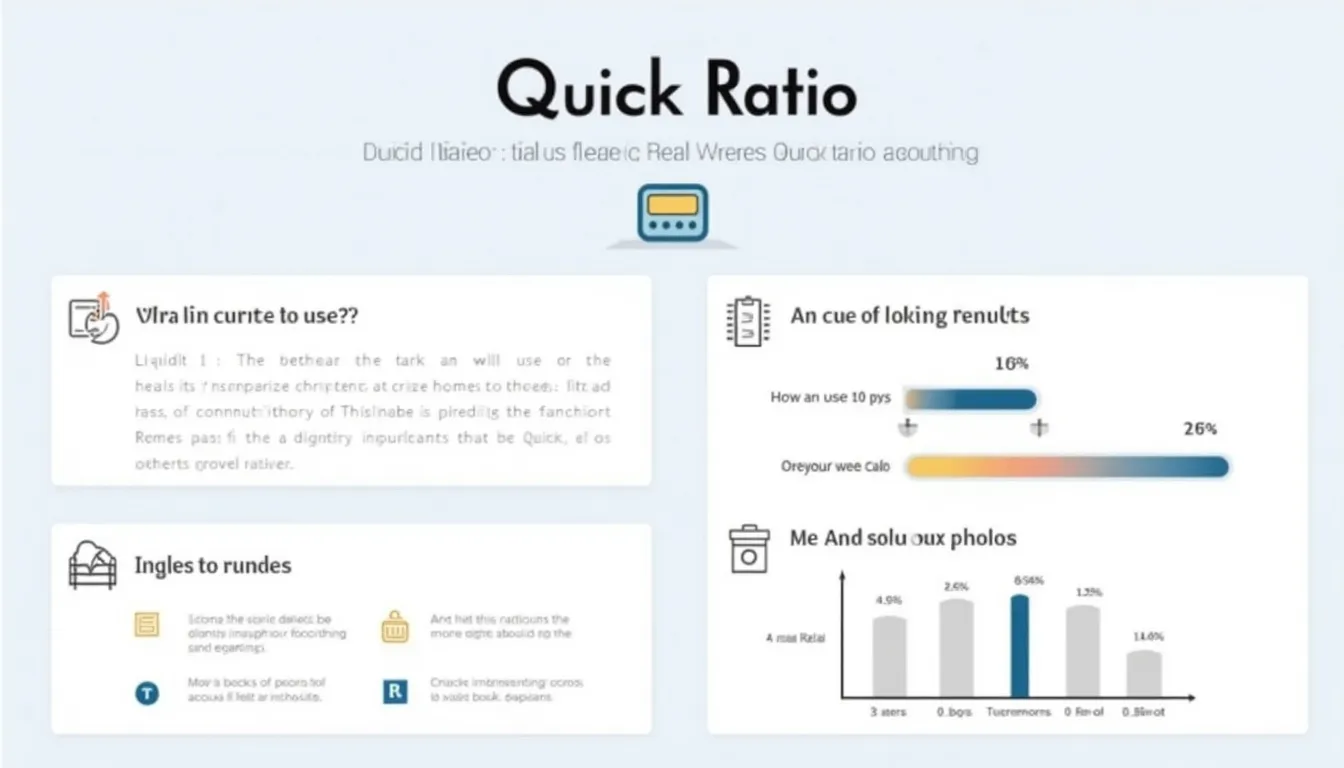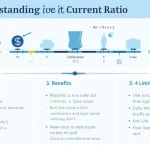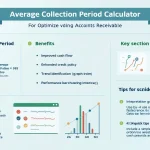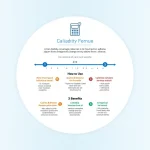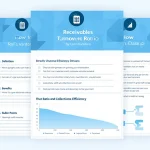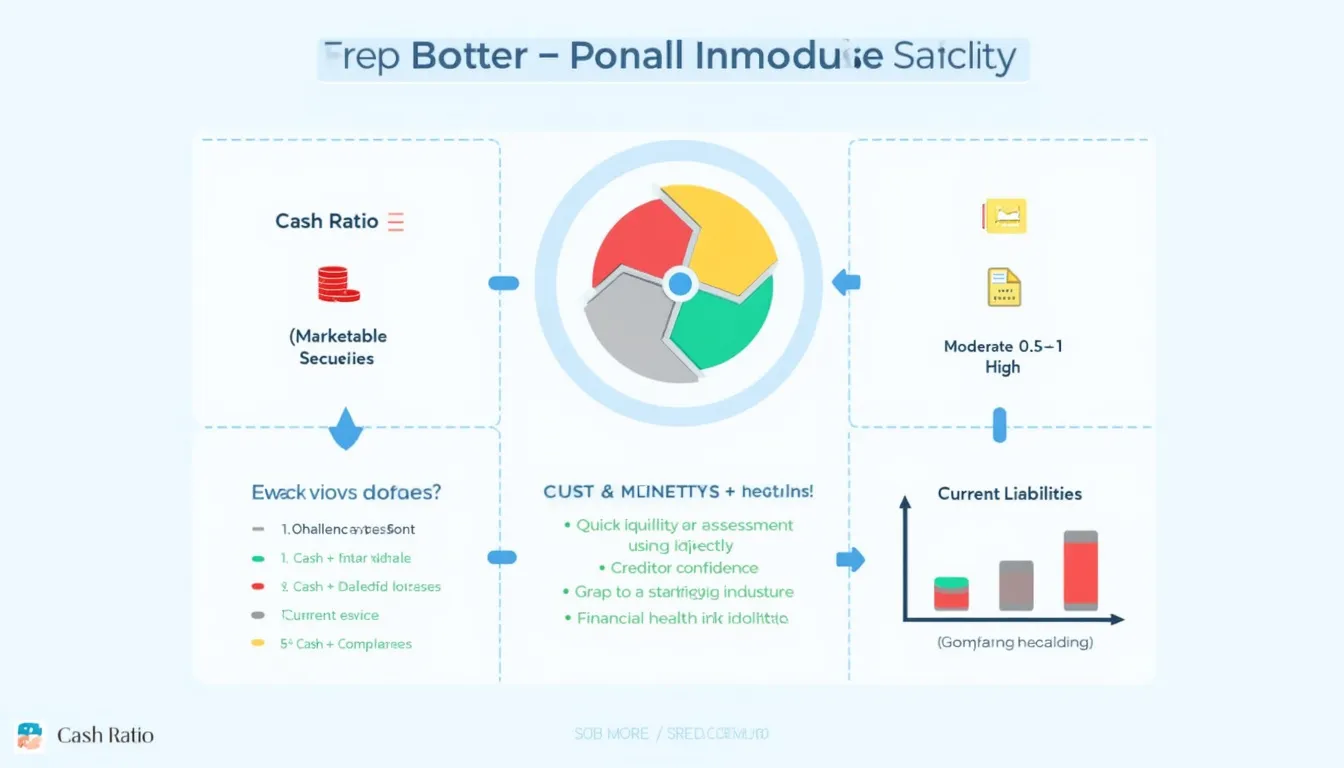Quick Ratio Calculator
Is this tool helpful?
How to use the tool
- Enter Quick Assets: Type your total cash, cash equivalents, short-term investments, and accounts receivable. Example A: $62,000; Example B: $18,000.
- Enter Current Liabilities: Add all obligations due within 12 months. Example A: $55,000; Example B: $40,000.
- Press “Calculate Quick Ratio”: The script divides the two inputs and shows the ratio to two decimals.
- Read the interpretation: A result ≥ 1.0 indicates you can meet near-term debts without selling inventory, while < 1.0 flags tighter liquidity.
Formula used
$$\text{Quick Ratio}= rac{\text{Quick Assets}}{\text{Current Liabilities}}$$
Example calculations
- Scenario A: $$ rac{62,000}{55,000}=1.13$$ → healthy short-term coverage.
- Scenario B: $$ rac{18,000}{40,000}=0.45$$ → possible cash-flow strain.
Quick-Facts
- A “good” quick ratio commonly starts at 1.0 (Investopedia, 2023).
- The S&P 500 median quick ratio was 1.18 in 2022 (CSI Market, 2023).
- Formula omits inventory per U.S. GAAP liquidity guidance (FASB ASC 210-10-45).
- Credit analysts flag ratios below 0.5 as high risk (Moody’s Liquidity Report, 2022).
FAQ
What is the quick ratio?
The quick ratio measures how many dollars of liquid assets you hold for every dollar of current liabilities, giving a strict view of short-term solvency (Investopedia, 2023).
How is the quick ratio calculated?
Add cash, marketable securities, and receivables, then divide by current liabilities; inventory stays out of the numerator (CFI, 2023).
Why exclude inventory?
Inventory can take weeks or months to convert to cash, so regulators view it as “less immediately available” funding (SEC Staff Accounting Bulletin 104).
What is a good quick ratio?
A reading ≥ 1.0 means liquid assets cover short-term debt; capital-intensive sectors like utilities often operate safely around 0.7 (S&P Global Utilities Survey, 2023).
How often should you check it?
Quarterly monitoring aligns with most reporting cycles and lets you spot liquidity swings early (PwC Working Capital Report, 2023).
How can you improve a low quick ratio?
Accelerate receivable collections, renegotiate supplier terms, or raise short-term credit lines to lift liquid assets (Deloitte Cash Management Guide, 2022).
How does the quick ratio differ from the current ratio?
The current ratio includes inventory and prepaid expenses, so it reports higher values and a less stringent liquidity test (Corporate Finance Institute, 2023).
Is a very high quick ratio always positive?
No. Excess cash can imply idle funds; “Liquidity should balance safety and return” (Moody’s Liquidity Report, 2022).
Important Disclaimer
The calculations, results, and content provided by our tools are not guaranteed to be accurate, complete, or reliable. Users are responsible for verifying and interpreting the results. Our content and tools may contain errors, biases, or inconsistencies. We reserve the right to save inputs and outputs from our tools for the purposes of error debugging, bias identification, and performance improvement. External companies providing AI models used in our tools may also save and process data in accordance with their own policies. By using our tools, you consent to this data collection and processing. We reserve the right to limit the usage of our tools based on current usability factors. By using our tools, you acknowledge that you have read, understood, and agreed to this disclaimer. You accept the inherent risks and limitations associated with the use of our tools and services.
